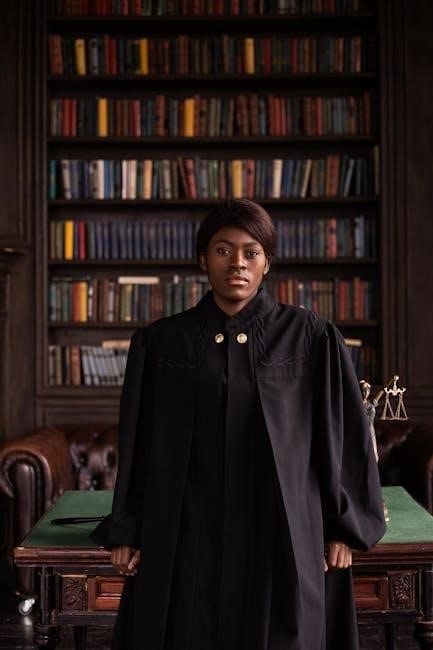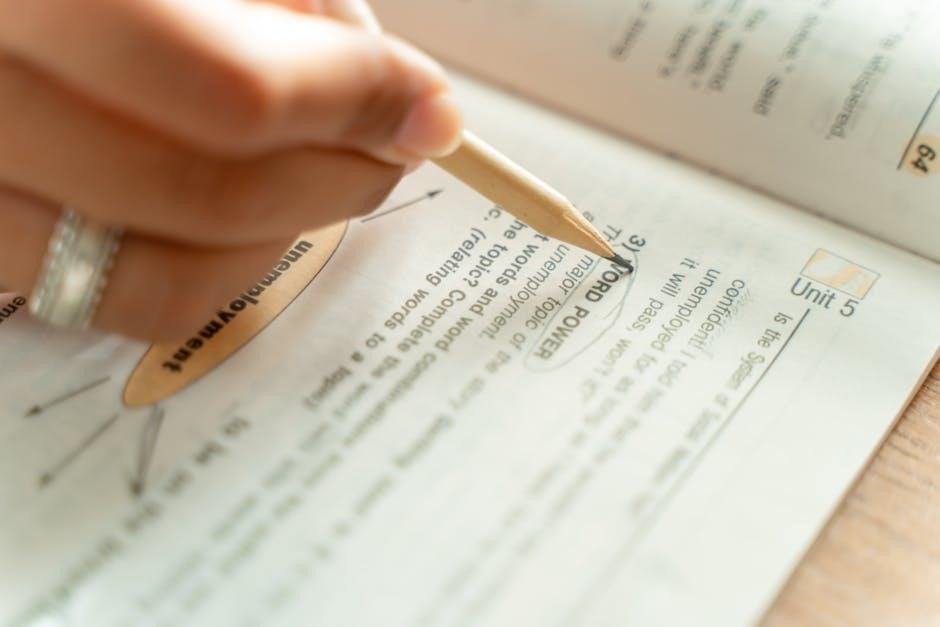This study guide covers key concepts for the unit 10 test, including circle properties and equations, to help students prepare and succeed on the exam with comprehensive notes and review materials available online now.
Overview of Circle Properties
The unit 10 test study guide circles provides an overview of circle properties, which is essential for understanding the concepts of circles.
Circles have various properties, including being a set of points equidistant from a central point called the center.
The study guide covers these properties, enabling students to comprehend the relationships between different components of a circle, such as the center, radius, and diameter, and how they relate to each other.
Additionally, the guide discusses the characteristics of circles, including their symmetry and the fact that all points on the circle are equidistant from the center.
By understanding these properties, students can better grasp the concepts of circles and apply them to solve problems and answer questions on the unit 10 test.
The overview of circle properties serves as a foundation for the more advanced topics covered in the study guide, including the calculation of area and circumference, and the identification of different parts of a circle.
Overall, the overview of circle properties is a crucial component of the unit 10 test study guide circles, providing students with a comprehensive understanding of the fundamental concepts of circles.

Parts of Circles
Circles have distinct parts, including center, radius, and diameter, which are essential concepts in geometry and are covered in the unit 10 test study guide circles with detailed explanations and examples online now always.
Definition of Center, Radius, and Diameter
The center of a circle is the point that is equidistant from every point on the circle, and it is often denoted as point P. The radius is a line segment that connects the center to any point on the circle, and its length is typically denoted as r. The diameter, on the other hand, is a line segment that passes through the center and connects two points on the circle, and its length is typically denoted as d. According to the unit 10 test study guide circles, the diameter is twice the length of the radius. Understanding these concepts is essential for solving problems related to circles, and students can find detailed explanations and examples online. The study guide provides a comprehensive review of these concepts, including formulas and theorems that can be used to solve problems. By mastering these concepts, students can improve their understanding of circles and perform well on the unit 10 test. The online resources include practice problems and quizzes that can help students assess their knowledge and identify areas where they need to focus their studying.
Understanding Chord, Secant, and Tangent
A chord is a line segment that connects two points on a circle, and it can be used to divide the circle into two segments. A secant is a line that intersects the circle at two points, and it can be used to create two segments. A tangent, on the other hand, is a line that touches the circle at exactly one point, called the point of tangency. The unit 10 test study guide circles provides a detailed explanation of these concepts, including examples and diagrams to help students understand the relationships between chords, secants, and tangents. The study guide also includes practice problems and quizzes to help students assess their knowledge and identify areas where they need to focus their studying. By mastering these concepts, students can improve their understanding of circles and develop problem-solving skills. The online resources include interactive diagrams and videos that can help students visualize and understand these concepts. Understanding chords, secants, and tangents is essential for solving problems related to circles and preparing for the unit 10 test.

Area and Circumference
Calculating area and circumference of circles is crucial, using formulas and techniques to find accurate measurements and solve problems effectively online now with study guides and resources available.
Calculating Area of a Circle
To calculate the area of a circle, students can use the formula A = πr^2, where A is the area and r is the radius of the circle. This formula is essential for solving problems involving circles.
Using this formula, students can find the area of a circle by squaring the radius and multiplying it by π. The value of π is approximately 3.14, and it is a constant that represents the ratio of a circle’s circumference to its diameter.
For example, if the radius of a circle is 4 meters, the area can be calculated as A = π(4)^2 = 3.14 * 16 = 50.24 square meters. This calculation is crucial in various real-world applications, such as architecture, engineering, and design.
Online resources and study guides provide practice problems and exercises to help students master the formula and calculate the area of a circle accurately. By understanding this concept, students can develop problem-solving skills and apply them to more complex circle-related problems.
Additionally, calculating the area of a circle is a fundamental concept in geometry and trigonometry, and it is essential for students to grasp this concept to succeed in their mathematics studies.
Calculating Circumference of a Circle
The circumference of a circle is the distance around the circle, and it can be calculated using the formula C = 2πr or C = πd, where C is the circumference, π is a constant, r is the radius, and d is the diameter.
Students can use either formula to find the circumference, depending on whether they are given the radius or diameter. For example, if the radius of a circle is 5 meters, the circumference can be calculated as C = 2π(5) = 2 * 3.14 * 5 = 31.4 meters.
Online study guides and resources provide practice problems and exercises to help students master the formula and calculate the circumference accurately.
Understanding how to calculate the circumference of a circle is essential in various real-world applications, such as architecture, engineering, and design.
By grasping this concept, students can develop problem-solving skills and apply them to more complex circle-related problems, and it is a fundamental concept in geometry and trigonometry that is essential for students to succeed in their mathematics studies with ease and confidence.

Additional Circle Concepts

Further circle topics include arc lengths, sector areas, and circle graphs, which are essential for a comprehensive understanding of circles and their applications in mathematics and real-world problems always online now.
Central Angle, Inscribed Angle, and Arcs
A central angle is an angle whose vertex is at the center of a circle, and its sides pass through the center and intersect the circle at two points. An inscribed angle is an angle whose vertex is on the circle, and its sides intersect the circle at two points. Arcs are segments of a circle, and they can be measured in degrees or radians. The measure of a central angle is equal to the measure of its intercepted arc. The measure of an inscribed angle is half the measure of its intercepted arc. These concepts are essential in understanding circle properties and are used in various mathematical and real-world applications, including geometry, trigonometry, and engineering. The unit 10 test study guide circles provides comprehensive review materials and practice problems to help students master these concepts and succeed on the exam. By studying central angles, inscribed angles, and arcs, students can develop a deeper understanding of circles and their properties.
Semicircle and Minor and Major Arcs
A semicircle is a half-circle, formed by dividing a circle into two equal parts. Minor and major arcs are segments of a circle, with a minor arc being less than a semicircle and a major arc being greater than a semicircle. The unit 10 test study guide circles provides examples and practice problems to help students understand the differences between these concepts. Students learn to identify and calculate the lengths of minor and major arcs, as well as the areas of semicircles. The study guide also covers the relationships between central angles, inscribed angles, and arcs, including semicircles and minor and major arcs. By mastering these concepts, students can develop a deeper understanding of circle properties and geometry. The review materials and practice problems in the study guide help students prepare for the unit 10 test and succeed in their mathematics studies. The concepts of semicircles and minor and major arcs are used in various mathematical and real-world applications, including geometry, trigonometry, and engineering.
